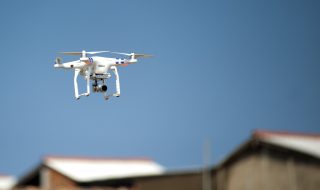
Many municipal buildings still rely on outdated electrical systems that consume more power than necessary and drive up operational costs. These legacy setups make it harder for cities to manage energy use effectively, especially as demands increase and budgets tighten.
Upgrading to modular busway power distribution offers a practical way forward. This approach streamlines how electricity moves through buildings, reduces energy waste, and creates a foundation for more sustainable public services. It also gives cities the flexibility to adapt their infrastructure over time, supporting both immediate improvements and long-term energy goals.
Overhauling Inefficient Electrical Systems with Busway Technology

Old wiring and rigid conduit systems in municipal buildings often waste energy. These outdated systems not only drive up power bills but also make maintenance and future upgrades harder. In many cases, bulky conduit runs limit the ability to reroute power efficiently, forcing costly downtime during renovations. Replacing them with busway technology clears away unnecessary cables and offers a cleaner, more organized power setup.
Busway systems provide a direct, low-resistance path for electricity, helping to improve energy efficiency. Their streamlined layout reduces energy loss and makes it easier to adjust power delivery as demand changes. Installing busway technology simplifies future expansions too, making it easier to grow or adapt without major rewiring.
Maximizing Flexibility and Cutting Maintenance Costs with Modular Systems
Modular power distribution—especially with plug-and-play busway systems—offers major advantages. Maintenance teams can shift power access points quickly without calling in specialized crews. For instance, relocating a lighting circuit to match a new workspace layout can take just minutes. This flexibility speeds up adjustments and supports changing energy needs.
Swapping out outdated junction boxes reduces energy loss and excess heat, easing the load on cooling systems. The result is less downtime, better efficiency, and fewer long-term repair costs. Modular setups give facilities a dynamic, easy-to-manage power infrastructure that adapts without disruptions or expensive rewiring.
Adapting to Variable Energy Demands in Municipal Facilities

Energy needs can change a lot in municipal buildings like government offices, schools, and community centers. Demands often rise during certain seasons or big events, putting extra strain on older electrical systems. Modular power distribution systems help with this by offering the flexibility to adjust to changing energy needs. They allow facilities to move power to where it’s needed most, solving many of the problems that come with outdated setups.
This approach helps balance the load between circuits and reduces wasted energy. Modular systems make it easier to manage resources, lowering the risk of overloads or failures during peak times. To get the best results, it’s smart to track energy use during high-demand periods. This helps figure out the best spots to place modular systems for better performance.
Increasing Sustainability Compliance for Government Buildings
Municipal buildings are under more pressure than ever to meet sustainability goals, driven by regulations and public expectations. Many are required to adopt energy-efficient strategies that lower their environmental impact. Modular power distribution systems are a practical solution, making it easier to manage energy use and support renewable power options.
Adding renewable energy like solar power shows a real commitment to sustainability. It lowers energy use and reduces dependence on non-renewable sources. Rooftop solar panels on government buildings can cover much of their daily power needs. Energy audits help identify where cities can make improvements and go greener.
Improving Electrical Safety While Boosting Efficiency
Keeping electrical systems safe is vital in public buildings, where any problem could lead to serious consequences. Moving to busway systems helps by offering better control over power delivery. These modern systems replace old, unsafe wiring and lower the risk of fires or electrical faults, creating safer spaces for workers and visitors.
A cleaner setup with fewer cables makes maintenance easier and safer. Workers move freely without tripping hazards, and key areas like emergency exits stay clear for quick access. Upgrades and regular checks reduce hidden risks in aging systems, keeping everything functional without the hassle of tangled wiring or outdated setups.
Modernizing municipal buildings with modular busway systems helps fix common issues like energy waste, high operating costs, and outdated wiring that slows down progress. These systems simplify power distribution, make maintenance more manageable, and support sustainability goals without requiring a full infrastructure overhaul. Cities can respond more easily to shifting energy demands while lowering utility bills and improving safety. Start with an energy audit to identify weak points in current systems. Then, target upgrades where they’ll have the most impact. This practical approach leads to safer, smarter, and more adaptable public buildings that work better for both staff and the community.




